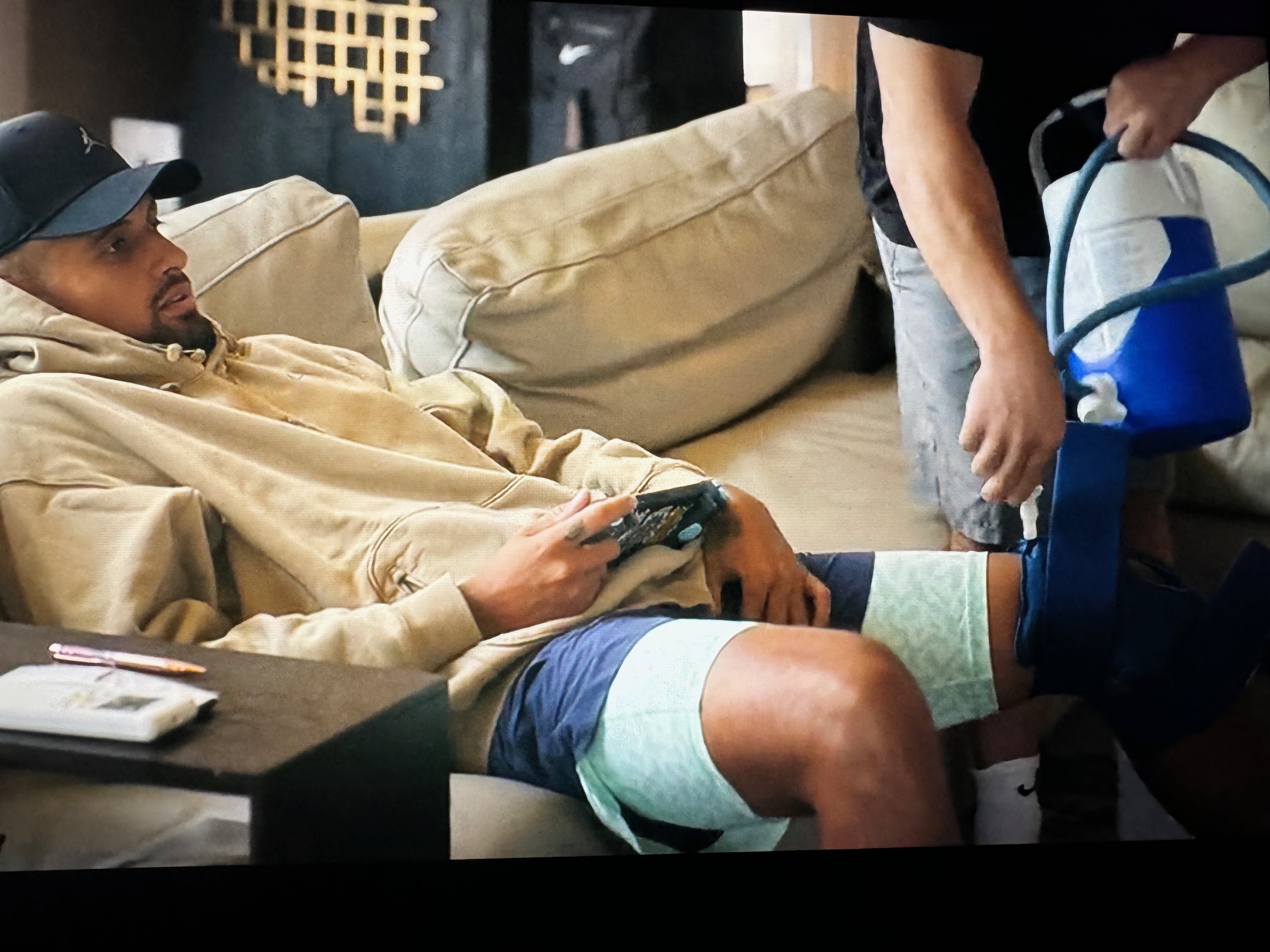I have written a lot about resistance bands on this site. Regular readers probably already carry some form of resistance training device in their tennis bags. My personal home gym has three permanently mounted anchor points for this type of activity. A portable anchor and band set is a key part of my “gym in a bag” that I habitually take on business travel. Resistance bands are a staple of tennis training and muscle activation prior to competition.
The Netflix docuseries ‘Break Point’ is rife with images of professional tennis players working out with elastic bands. As I continue to break down the exercises that made cameo appearances on the show, I encountered a flurry of resistance band activity during Season 1 Episode 4. As a result, I have elected to condense the resistance band instances from this episode into a single post. It is a desperate attempt to pick up the pace.
One of the primary reasons that resistance bands are ubiquitous on the professional tennis tours is because they are extremely lightweight and portable. Additionally, the device produces similar results to working out with traditional weights. It is also well suited for simulating the functional movements required in tennis.
In this Netflix episode, Paula Badosa is seen performing scapular retraction rows using a resistance band. That exercise is good for tennis players because it targets the muscles that provide shoulder stability. In addition to the pure strength benefits, building these shoulder muscles can help prevent injury.


A few scenes later, Badosa is once again shown performing chest flys with the resistance band. This exercise targets the pectoral muscles. While tennis is a sport that involves a lot of upper body rotation and core engagement, having a strong chest can aid in generating power in shots, particularly for the serve and overhead smash.
Toward the end of this episode, Ons Jabeur is briefly seen performing face pulls with what is most likely a superband loop. Face pulls work the upper back and shoulder muscles. It is a great counteraction to the muscular imbalances that tennis players frequently experience. It is also good for people who spend a lot of time sitting at a desk squinting at a computer screen. (Hey! That’s me!)

Resistance bands are a versatile and effective tool for tennis players to build strength and perform muscle activation prior to stepping onto the court. If you are not already investing time on this quick, easy, and inexpensive training technique, consider this your call to action.
Fiend At Court participates in the Amazon associates program and receives a paid commission on any purchases made via the links in this article. Details on the disposition of proceeds are available on the “About Fiend at Court” page.



